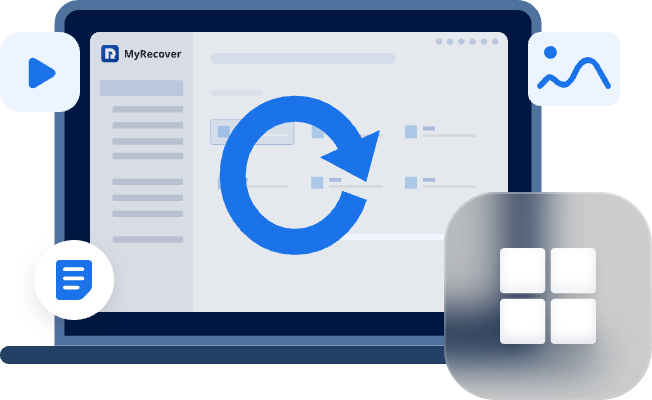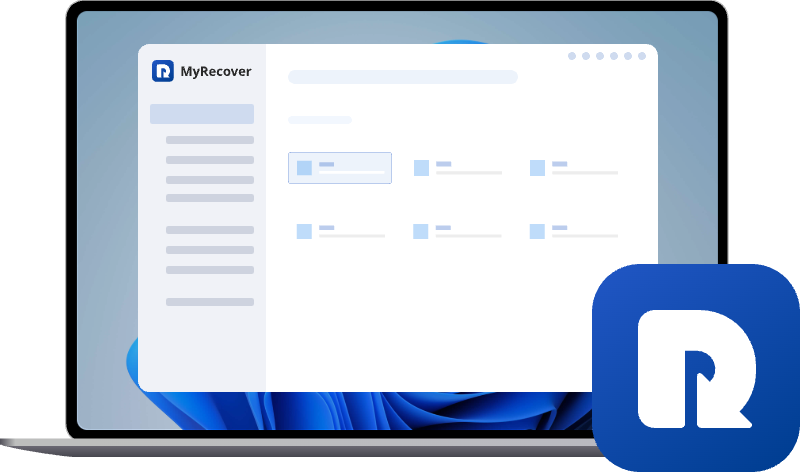Does System Restore Delete Files? The Honest Truth
This article explains precisely does system restore delete files like your documents and photos, detailing what data is safe. Furthermore, it contrasts this with the more drastic process of System Recovery, answering does system recovery delete all files to help you avoid unintended data loss.
About System Restore
A System Restore can fix problems with your Windows system files, which can wind back time to when your PC was healthy. Does System Restore delete files? Well, you can breathe a sigh of relief. The short answer is no, but the complete picture is a bit more nuanced.
This guide will cut through the confusion, giving you a crystal-clear understanding of what System Restore does and, more importantly, what it doesn’t do to your personal files. We'll tackle every angle, from does a system restore recover deleted files to the more drastic does system recovery delete all files, ensuring you have the confidence to use this powerful tool without fear.
What System Restore Is and How It Works
Periodically, Windows takes a "snapshot" of critical system files, program files, registry settings, and drivers. This snapshot is called a restore point. When you initiate a System Restore, you're telling Windows to revert all these core components back to the state they were in when that snapshot was taken. It's like undoing a bad system-wide change without affecting the contents of your personal drawers and cabinets.
How to perform a System Restore in Windows 10? Check the steps below:
1. Close all open programs and save any open files before starting.
2. Type "Create a restore point" in the Windows 10 search box and click it.
3. Go to System Protection > System Restore….
4. Choose a restore point from the list. You can select "Show more restore points" to see additional options. Optionally, select Scan for affected programs to see what apps and drivers will be removed.
5. Click Next and then click Finish.
The computer will restart and apply the restore. Do not interrupt the process.
How long does System Restore take? The process can take 20-45 minutes. Your PC will restart, and you'll see a screen indicating that System Restore is in progress. Don't turn off the power during this time!
Once it's done, Windows will boot up normally, and you'll see a confirmation message. First, check if the problem you were trying to fix has been resolved. Then, check your important programs to see if any are missing and need reinstalling.
The Difference Between System and Personal Files
Windows makes a clear distinction between:
- System Files: The core programs and files that make Windows, well, Windows. These are the gears and cogs under the hood.
- Personal Files: The things you create and save. This includes everything in your Documents, Pictures, Videos, Music, and Desktop folders, as well as your downloads and emails.
System Restore is designed to tinker with the gears and cogs, not rummage through your personal drawers.
Common Reasons to Use System Restore
So, when should you use system restore? It's perfect for rolling back from system instability caused by a recent change. Classic scenarios include right after you've installed a new piece of software that causes crashes, updated a driver that makes your screen flicker, or downloaded a Windows update that breaks a legacy application. It's your go-to "undo" button for system-level mishaps.
Does System Restore Delete Files?
To put it plainly, a standard System Restore operation is not designed to delete your personal files. Your documents, photos, videos, and other data stored in your user profile folders are left completely untouched. So, if you're worried about losing your tax returns or vacation pictures, you can rest easy.
Does System Restore delete apps and drivers? It depends. If you installed a new antivirus program yesterday and then restore to a point from last week, that program will be uninstalled. Its associated system files and registry entries are removed, which is often the entire goal of the exercise.
In a nutshell, a System Restore will not delete a single photo from your Pictures folder or a single Word document from your Desktop. It doesn't scan these locations or interact with them in a way that would cause deletion. Your personal world remains intact while the operating system's foundation is repaired.
Does a System Restore Recover Deleted Files?
Does System Restore bring back deleted files? No, System Restore cannot recover deleted files; its purpose is to fix system issues by reverting the operating system and applications to an earlier state, leaving personal files untouched.
But you should know that any program you uninstalled after the restore point was created might be reinstalled! This is because System Restore brings back the system files for programs that were present at that time.
Recover Personal Files Deleted by Other Issues
Your personal files might be deleted by other issues, like software glitches, formatting, file system errors, etc. How to recover deleted files easily in Windows 11, 10? It’s highly recommended to use professional data recovery software to easily recover all at once.
MyRecover stands out by transforming a complex, technical ordeal into a straightforward and highly effective recovery process. Its strengths lie in a powerful combination of advanced technology and user-centric design.
Key Strengths of MyRecover:
- Comprehensive File Format Support: MyRecover is engineered to recognize and recover a vast array of file types(1000+), including video formats (MP4, MOV, AVI), audio files, archive files, and emails, etc.
- User-Friendly, Intuitive Interface: MyRecover’s greatest strength for the average user is its simplicity.
- Highest Recovery Rate: While a quick scan finds recently deleted items, MyRecover’s true power is in its advanced Deep Scan. This feature performs a sector-by-sector analysis of your storage device, meticulously searching for any traces of lost data.
- Recover Unlimited Files. You can recover unlimited files at once instead of recovering them multiple times.
So, how to easily recover deleted files in Windows 11/10 with MyRecover? Check the full guide:
1. Launch MyRecover after installing it on your computer, and choose Deleted Files Recovery.
2. Choose the drive where your files are stored before deleting, and hit Scan.
3. Hit OK when it’s done.
4. Choose the files you need and hit Recover, then opt for a location to keep them safe.
- Tips:✎...
- You can preview files before recovery to ensure they are intact and the right files you’re looking for.
- Once scanned, you can filter files by file name, file type, file path, and file size to find them quickly, saving time and effort.
- To recover files from unlimited computers within a company, you can upgrade to try MyRecover Technician.

- Recover Deleted Files Easily with Simple Clicks
- 1000+ File Formats Supported
- Support HDD, SSD, External Hard Drive, USB Drive, SD Card, etc.
- Quickly Find Files Using File Types, Name, Size, etc.
- Preview Files Before Recovering
- Recover Unlimited Data
FAQs About System Restore
Q: What is the main difference between System Restore and a full system reset?
A: System Restore is a surgical tool that affects only system files and programs, leaving your personal files untouched. A full system reset reinstalls Windows and always removes your apps; its "Remove everything" option also deletes all personal data. System Restore fixes software issues; a reset provides a fresh Windows start.
Q: Can I use System Restore to recover a file I accidentally deleted yesterday?
A: No, this is a common misconception. System Restore is not designed for file recovery and does not monitor personal files like documents or photos. For a deleted file, check your backup, cloud storage trash, or use dedicated file recovery software instead.
Q: Will System Restore remove a virus or malware from my computer?
A: It might, but it's unreliable. While it could remove malware's system files if you have a clean pre-infection restore point, many modern viruses disable System Restore or infect the points themselves. Use a dedicated antivirus scanner for reliable malware removal.
Q: Why is my System Restore not working or failing to complete?
A: Common causes include antivirus software interference (try disabling it temporarily), insufficient disk space, or a corrupted restore point. Attempt using an older restore point or running System Restore from Windows Safe Mode to bypass software conflicts.
Q: How far back can I go with System Restore? How long are restore points kept?
A: Restore points are kept based on allocated disk space, not time. As new points are created, old ones are deleted to make room. You can see all available points in the System Restore wizard, which shows their exact creation dates.
Q: If I use System Restore and it doesn't fix my problem, can I undo it?
A: Yes. System Restore automatically creates an "Undo" point before making changes. If the restoration doesn't work or causes issues, simply run System Restore again and select this undo point to revert to your previous state, making the process low-risk.


